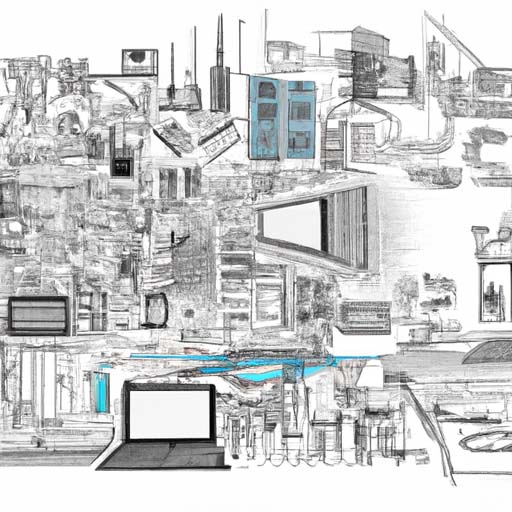The Role of Automation in Renewable Energy
Automation has been revolutionizing various industries across the globe, and the renewable energy sector is no exception. As the world continues to seek sustainable alternatives to fossil fuels, automation has emerged as a key player in improving efficiency, reducing costs, and accelerating the adoption of renewable energy sources. In this article, we will explore the profound impact of automation on the renewable energy sector and discuss the advancements that have made it possible.
The Advantages of Automation in Renewable Energy
1. Enhanced Efficiency and Performance:
One of the primary benefits of automation in renewable energy is the ability to enhance efficiency and performance. Automated systems can monitor and optimize the energy generation process in real-time, ensuring that renewable energy sources operate at peak efficiency levels. By continuously adjusting various parameters such as blade angles in wind turbines or tilt angles of solar panels, automation maximizes energy output while minimizing unnecessary downtime.
Additionally, automation enables remote monitoring and control of renewable energy systems, allowing maintenance crews to identify and address issues proactively. This reduces the need for manual intervention and significantly improves overall system performance and reliability.
2. Cost Reduction and Affordability:
Automation plays a pivotal role in driving down costs and making renewable energy more affordable. Through advanced monitoring and control systems, automation optimizes the use of available resources, minimizing waste and maximizing cost-effectiveness. By reducing human labor requirements, operating expenses can be significantly reduced, making renewable energy more competitive with traditional energy sources.
Besides cost reduction in operation and maintenance, automation also streamlines the production and installation processes in renewable energy systems. From pre-fabrication to assembly line automation, the entire manufacturing process is expedited while ensuring consistent quality, resulting in further cost savings.
3. Safety and Risk Mitigation:
Automation brings considerable safety and risk mitigation benefits to renewable energy operations. By eliminating or reducing the need for human intervention in hazardous environments, such as offshore wind farms or solar power installations at great heights, the risk of accidents is significantly reduced. Automated systems can also swiftly respond to potential threats, triggering necessary safety protocols and mitigating risks more effectively than manual intervention.
Technological Advancements Driving Automation
1. Internet of Things (IoT):
The Internet of Things (IoT) has been instrumental in enabling automation in the renewable energy sector. Through interconnected devices and sensors, IoT enables the seamless transfer of real-time data, facilitating monitoring and control of renewable energy systems. Data collected from various sources, such as weather conditions or energy consumption patterns, can be analyzed to optimize energy production and distribution, ensuring maximum efficiency and reliability.
2. Artificial Intelligence (AI):
Artificial Intelligence has further propelled automation in renewable energy by enabling predictive analysis and decision-making capabilities. AI algorithms can analyze vast amounts of data, identifying patterns, and predicting potential issues or performance improvements. This proactive approach allows for predictive maintenance, reducing downtime and optimizing energy production.
Moreover, AI-powered algorithms can optimize energy distribution and storage, responding to fluctuations in energy demand and supply. By balancing the grid and intelligently allocating energy resources, AI enhances the overall stability and reliability of renewable energy systems.
3. Robotics and Drone Technology:
Robotics and drone technology have also played a vital role in automating various aspects of renewable energy systems. Drones equipped with advanced sensors and cameras can inspect solar panels or wind turbines, detecting potential faults or damage. Robotic systems, on the other hand, can perform complex maintenance tasks, such as cleaning solar panels or replacing faulty components, without human intervention.
The Future of Automation in Renewable Energy
The role of automation in the renewable energy sector is poised to grow even further in the coming years. Ongoing advancements in technology, coupled with decreasing costs, will continue to drive the adoption of automation in various renewable energy applications.
As renewable energy becomes increasingly integrated into existing power grids, automation will play a critical role in managing the complex interactions and ensuring optimal performance. From intelligent energy storage systems to smart grid management, automation will be at the heart of a sustainable and efficient renewable energy ecosystem.
In conclusion, automation is revolutionizing the renewable energy sector by enhancing efficiency, reducing costs, and improving overall performance. Through advancements in IoT, AI, robotics, and drone technology, automation has unlocked new opportunities for the widespread adoption of renewable energy sources. As we embrace a future powered by clean, sustainable energy, the role of automation will only continue to grow, propelling us towards a greener tomorrow.
